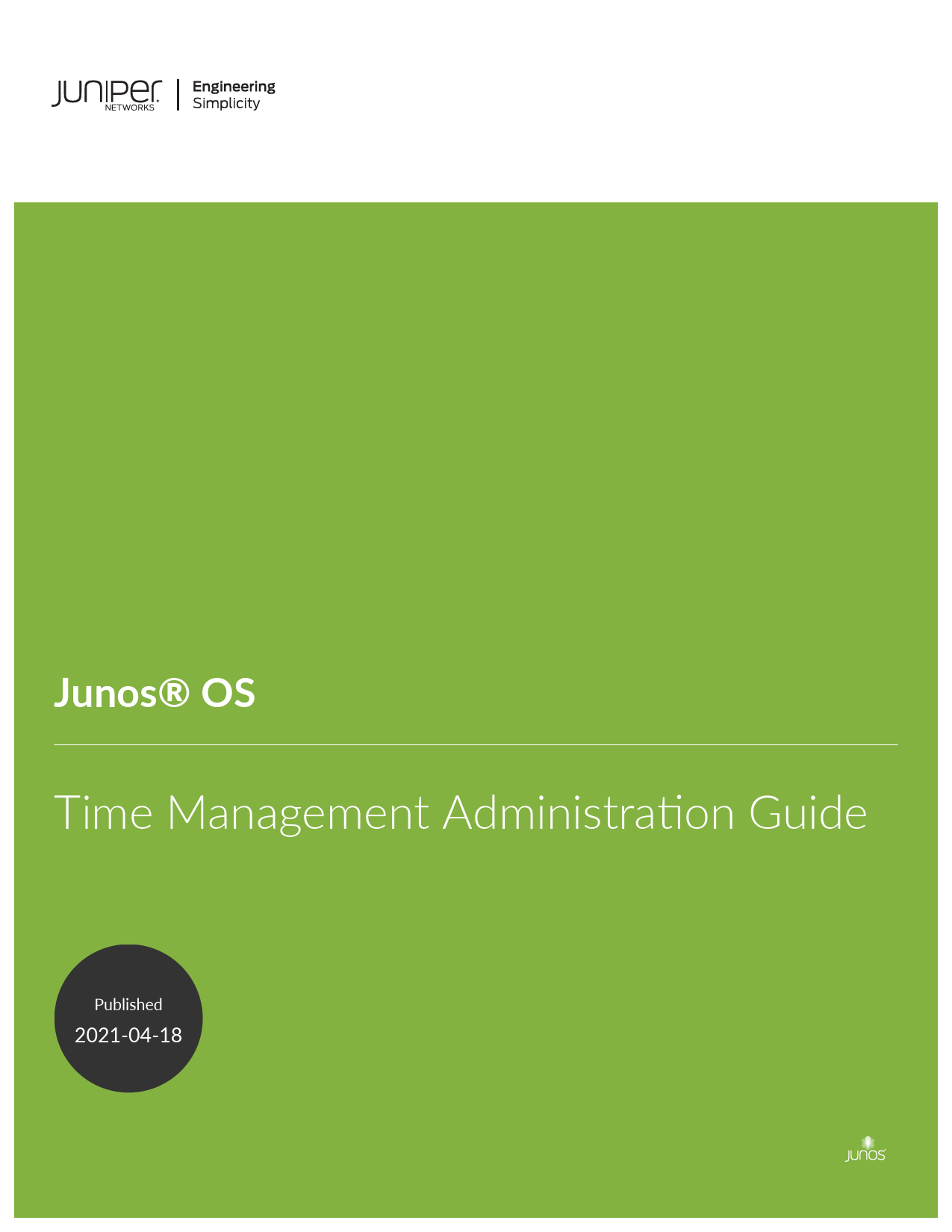About This Guide
This document provides detailed instructions and overviews for managing time-related configurations on devices running Junos OS. It covers the setup and administration of Network Time Protocol (NTP) and Precision Time Protocol (PTP), crucial for maintaining accurate time across distributed network environments.
Key Topics Covered
- Configuring Date and Time settings
- Understanding and utilizing NTP Time Servers
- Implementing Precision Time Protocols (PTP)
- Managing Time Zones and updates
- Synchronizing clocks using various protocols
- Specific configurations for ACX, MX, and PTX Series Routers
Learn More
For more information on Juniper Networks products and solutions, visit Juniper Networks Official Website.
For software license agreements, refer to Juniper Networks End User License Agreement.
